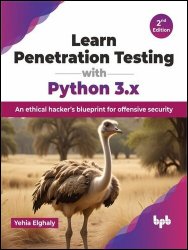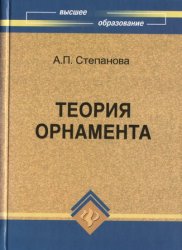 Название: The Signed Distance Measure in Fuzzy Statistical Analysis: Theoretical, Empirical and Programming Advances
Название: The Signed Distance Measure in Fuzzy Statistical Analysis: Theoretical, Empirical and Programming AdvancesАвтор: Redina Berkachy
Издательство: Springer
Год: 2021
Страниц: 356
Язык: английский
Формат: pdf (true), epub
Размер: 21.2 MB
The main focus of this book is on presenting advances in fuzzy statistics, and on proposing a methodology for testing hypotheses in the fuzzy environment based on the estimation of fuzzy confidence intervals, a context in which not only the data but also the hypotheses are considered to be fuzzy. The proposed method for estimating these intervals is based on the likelihood method and employs the bootstrap technique. A new metric generalizing the signed distance measure is also developed. In turn, the book presents two conceptually diverse applications in which defended intervals play a role: one is a novel methodology for evaluating linguistic questionnaires developed at the global and individual levels; the other is an extension of the multi-ways analysis of variance to the space of fuzzy sets. To illustrate these approaches, the book presents several empirical and simulation-based studies with synthetic and real data sets. In closing, it presents a coherent R package called “FuzzySTs” which covers all the previously mentioned concepts with full documentation and selected use cases. Given its scope, the book will be of interest to all researchers whose work involves advanced fuzzy statistical methods.
This book intends to present some advances in fuzzy statistical analyses. A particular distance between fuzzy numbers, called the signed distance, seems to be appealing because of its directional property. It has the ability of describing the direction of travel between two fuzzy numbers. In addition, it has been often used as a fuzzy ranking tool or a defuzzification operator. Despite the fact that this distance appears to have interesting properties, it presents serious drawbacks. To overcome these problems, this book develops improved versions of it given by two L2 metrics for which the first one is directional and preserves the properties of the signed distance, and the other one is non-directional. Both sophisticated distances have the advantage of taking into consideration the shapes of the fuzzy numbers and their possible irregularities. The core aim of this book is therefore to apply these novel distances in a series of statistical approaches defined on the set of fuzzy numbers.
Based on the proposed distances, this book provides a methodology of testing hypotheses in the fuzzy environment. This method of testing relies on the estimation of fuzzy confidence intervals, where we consider not only the data as fuzzy, but also the hypotheses. As such, the defended distances are used at different stages of the process of the inference test: in the conception of the models themselves or as defuzzification operators of the obtained fuzzy decisions. Moreover, since the traditional way of estimating fuzzy confidence intervals is in some sense limited in terms of the chosen parameters and the involved distributions, this book presents a practical procedure of estimation of such intervals based on the likelihood method. This new procedure is seen as general, since it can be used with any type of parameter and without the obligation of defining a particular distribution a priori. Analogously to this testing model, a definition of the fuzzy p-value described in the same setups with its corresponding decision rule is given. In this context, a defuzzification of this fuzzy p-value can be of good use to get a crisp interpretable decision.
Despite the fact that the approaches presented in the first two parts are appealing from a theoretical point of view, being able to apply them in statistical analysis with real data sets seems to be another level of challenge. These analyses are always computed by functions describing the corresponding procedures in the R statistical software found in R Core Team. Several researchers have already developed R functions used in similar contexts. We briefly review some of them. For basic introduction of fuzzy numbers, the package FuzzyNumbers described in Gagolewski is very known in the field. It provides methods to deal with basic fuzzy numbers. In addition, based on the extension principle, this package gives the required tools to perform arithmetic operations on fuzzy numbers. This task can be accomplished by an approximation or by exact fuzzy values, often based on trapezoidal or piecewise continuous fuzzy numbers. These operations are described theoretically in Chap. 2. Several packages have treated the subject of linguistic terms by fuzzy tools. Many of them considered fuzzy systems as presented in Chap. 3. We note, for example, the package FuzzyToolkitUoN described in Knott et al. , which consists of a framework of fuzzy inference systems based on different inference and aggregation rules, and using some known defuzzification operators. In the same way, the package lfl (“Linguistic Fuzzy Logic”) presented in Burda provides algorithms of computations of fuzzy rule-based systems. The objective of the package FuzzySTs is to provide an implementation of the theoretical approaches presented in the first two parts. Despite the fact that our functions are all coherent and constitute a whole, in order to present our package, we describe each function in the same order as their content appears in the previous chapters. For each function, we expose a detailed description, its arguments, the obtained outputs, and the different function dependencies. They are finally illustrated by simple examples.
Скачать The Signed Distance Measure in Fuzzy Statistical Analysis: Theoretical, Empirical and Programming Advances
[related-news] [/related-news]
Комментарии 0
Комментариев пока нет. Стань первым!















